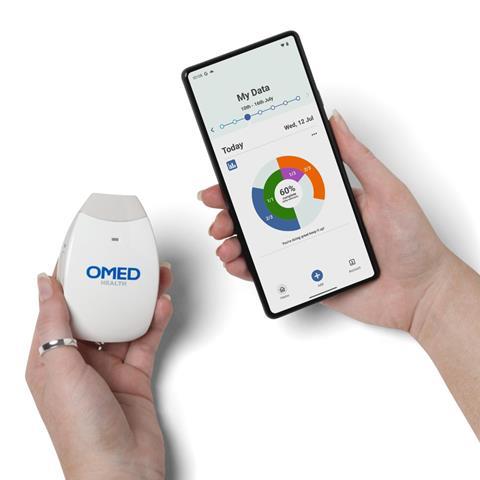Gut health issues impact millions of people every day. Gastrointestinal (GI) diseases are a leading cause of cancer death and among the most common causes of hospital admission. This is a heavy burden for patients, healthcare systems, and the economy. As a physician, I have seen first-hand the complex interplay of factors contributing to this crisis and it is clear that a one-size-fits-all solution is not sufficient. A multifaceted approach is imperative to address these issues effectively.
What are the biggest barriers to the diagnosis and treatment of digestive diseases?
Despite increasing exposure in the media, there’s still limited awareness of the topic of gut health and the stigma surrounding it can prevent patients from seeking help. People are often held back by embarrassment from discussing their condition which drives them to avoid or delay seeking treatment until their condition becomes debilitating. Patients also often face difficulties when navigating the healthcare system, mostly due to long waiting times for access to care. Despite the demand, the time to diagnosis for GI issues is typically slow, leaving millions of patients waiting for relief, often experiencing symptoms that significantly affect their quality of life. Delays in diagnosis can also lead to more complex and harder to treat conditions, requiring more interventions once care is finally in place, causing further strain on the system.
Where should the government budget be placed to alleviate pressure on staff and improve efficiency and quality of care?
The healthcare budget must be strategically allocated to tackle key areas: workforce retention and expansion, infrastructure improvements, and education and prevention. The system fundamentally relies on its staff and their ability to perform extremely demanding and stressful roles. Investing in the workforce by compensating them appropriately, addressing burnout, and providing adequate support is paramount to increasing job satisfaction and ultimately recruitment and retention rates. Current bottlenecks in accessing specialised tests and procedures for diagnosis and treatment can also be alleviated by investing in better diagnostic facilities and streamlining referral processes. This would reduce waiting times and allow for earlier diagnosis and treatment. Education and prevention play a pivotal role in improving access and quality of care. Healthcare professionals should acknowledge their role and responsibility in dismantling the stigma surrounding gut health. They should strive to foster a non-judgmental, empathetic, and supportive environment where patients feel at ease and are comfortable sharing their experiences. They should also take a more active role in confronting common misconceptions and raising awareness of lesser-known gastrointestinal disorders.
Timely access to high-quality care is a key principle of the NHS Constitution, but is their pledge to reduce waiting times feasible?
It’s an ambitious proposal but not entirely unfeasible. Substantial action must be taken to tackle the unprecedented waiting times for consultations and procedures, much exacerbated by the recent COVID-19 pandemic. To make a real impact, a sustained investment in operational efficiency must be at the heart of the government’s approach. In addition to the mentioned investments in the workforce, systemic changes should focus in reducing administrative burdens on professionals to actively increase their direct clinical commitment time. Leveraging new technologies to streamline patient care pathways can also significantly improve efficiency.
How can the government follow through on its promise to prioritise preventative care?
Preventative care is the cornerstone of managing gut health, yet this is often overlooked when considering healthcare strategy. The promise to prioritise preventative efforts must be backed by substantial measures. Increased investment in public health initiatives to educate in matters such as good dietary habits, exercise and mental health - key factors in optimising gut health for example - is long overdue and has shown to have a tremendous impact on general physical and mental health. Furthermore, giving general practitioners the time and facilities to integrate preventative care into their routine appointments is essential. This could include routine screenings for high-risk individuals to identify and address potential issues early before they escalate and cause a significant burden on secondary care services.
How can health-tech devices be used to improve patient outcomes?
New technologies pave the way for a patient-lead approach to symptom management, allowing people to take control of their gut health. These tools also provide valuable data to healthcare providers allowing them to personalise their care further and timely address arising issues. The newly launched OMED Health Breath Analyzer is a hand-held device that allows people to measure levels of hydrogen and methane in their breath. These gases aren’t produced by the body but by microorganisms living in our intestines. The gases are byproducts of carbohydrate fermentation and higher levels often correspond to symptoms for people with inflammatory bowel syndrome (IBS) or small intestinal bacterial overgrowth (SIBO).

The device pairs to the app via Bluetooth, providing immediate results that can be tracked alongside mood, foods eaten, bowel movements, and other symptoms. The data can be easily shared with your doctor to help support you on your journey and advise you, going forward. Devices like this are truly life-changing for people struggling with gut issues. It’s finally a way to accurately monitor what’s going on in your body and be confident in knowing that what you’re feeling corresponds to real physiological changes. This is also coupled with advantages to healthcare professionals, allowing simple at-home monitoring of treatment and reducing the burden of waiting lists as patients do not need to attend an appointment or wait for a test.








No comments yet